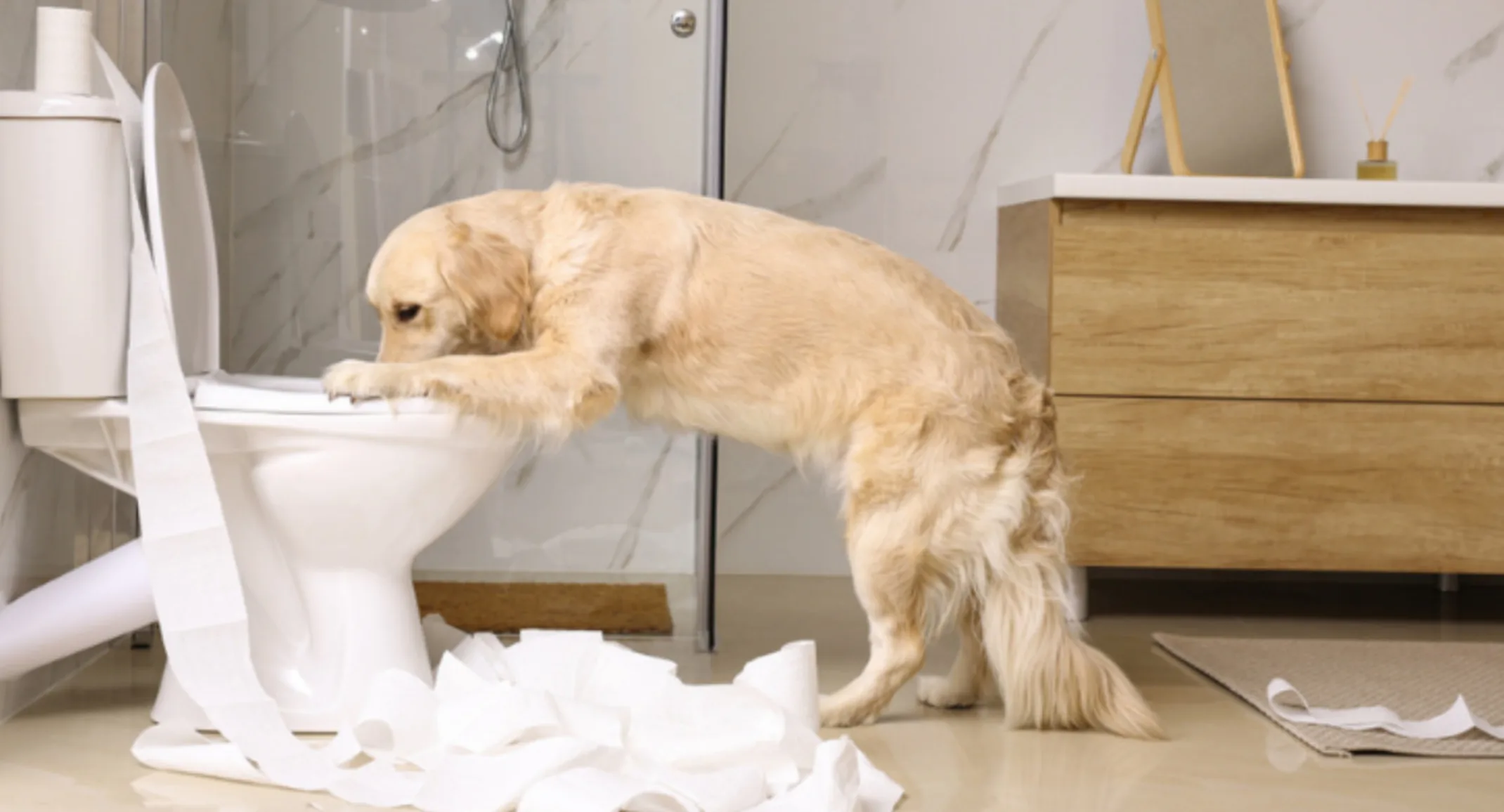House Training
For Pet Owners

There are three different categories that fall under the concept of house training:
Basic house training – This applies to establishing an allowable toilet area for puppies or older dogs that are new to your home. Problems can include both urination and defecation.
Submissive wetting – This relates to urination when greeting, disciplining, or excitement.
Marking – This can include defecation, but is more commonly a urination marking problem. Both male and female dogs can display this behavior. It is only seen in dogs that have reached puberty.
If your dog has a problem with submissive wetting and is older than four months of age, or if your dog is experiencing problematic marking behavior, we recommend consulting a trainer or behaviorist.
House training
If you are committed and prepared from the first moment you introduce your new puppy or dog to your home, it should take about two weeks to achieve appropriate house training behavior.
If you have a puppy or dog that has already developed bad house training habits, new reliable behavior can take six weeks or more to establish. Always make sure there are no medical problems complicating housetraining issues. Any type of urinary tract problem can lead to increased frequency in urination and/or accidents in the house.
Diet can be very important. Some foods can make it more difficult to house train a dog.
Toilet areas can be as general as an area outside, or as specific as a newspaper or “pee pad.” You must have a clear idea about what is an acceptable elimination spot before you start house training. Otherwise it can become very confusing for your puppy or dog. Your dog can even be trained to use a specific corner of the yard if you are dedicated enough to train him to that level of understanding.
Your attitude is probably the most important ingredient in the house training formula. You are taking your puppy or dog through a process of education. He is not born knowing where to eliminate in your home. His mother never told him. It’s your job to teach him where to eliminate, and also to help him conquer the language barrier between dogs and people.
Create a schedule
You are creating a schedule for your dog. Create one that is convenient for you, and works with your lifestyle.
Do not feed your dog free-choice meals while establishing a house training schedule. Keep all meals on a predictable schedule. Snacks and treats should be kept to a minimum while setting the schedule. Avoid any “rich” foods that could upset your dog’s tummy.
Establish a bedtime and wake-up time. Try to stick as close to these times as possible.
Young dogs need lots of nap times, just like young humans. Make sure to provide for this in the schedule. Keep in mind, your dog or puppy will need to be taken out after each nap.
Any time your dog experiences an emotional stimulus such as excitement, fear, or goes through a rowdy play session, he will probably need to eliminate.
Most dogs will be able to “hold” their bladders for eight hours during the night, but daytime schedules have many more variables. Pay attention, supervise, and educate your dog and you will establish a daytime schedule you both can live with.
Supervision in the house
If you know where your dog is at all times, and what he is doing, you can catch him before he makes a mistake. If he starts to make a mistake, firmly but calmly say “No” and take him straight out to the toilet area. Do not yell at him or chase him, just interrupt the behavior, and show him the right space to go.
If you are busy and cannot totally supervise your dog, put him in a contained area where he won’t make a mistake, or tie him to a doorknob in the area you’re in. If you are sitting reading or watching T.V., have your dog with you on a leash. This way, the dog is not wandering and can’t make a mistake out of your sight, or around the corner.
Before you relax, give your dog some toys or a stuffed Kong to play with so he learns that being with you is pleasant.
When supervision is not possible
Provide a small area to contain the dog in (e.g. bathroom, garage, crate). Do not leave food or water with the dog, and do not give too many treats before you leave. If you are gone more than eight hours, it would be best to find someone who can go in and give him some water and take him to relieve himself.
Take your dog out
Take your dog to the desired toilet area and stand quietly while the dog investigates for the right spot. This is not play time. Do not distract the dog by trying to hurry him up. Three to five minutes is the length of time you should give the dog.
If he doesn’t go in that time, return him to the house, contain him for a half hour, and then try again. When he does start to eliminate, quietly and calmly praise him while he is in the process of going.
When he is finished, you can praise him with more enthusiasm. Learn your dog’s habits – some dogs need to potty two or three times per outing, some just one. Urination is often followed by defecation.
If the weather is foul, and you’re not happy about having to take your dog out, it’s important to not let him know this. If you do, he might learn to dislike going out in the rain and find an indoor place to potty instead. While you are learning your dog’s individual habits, take him out after every nap, every feeding, and every play session.
What do I do when I catch him in the act?
Quietly, but firmly, say “No.” If you must add volume to catch his attention, clap your hands. Interrupt the behavior, then help him to the desired area for elimination. Clean the mess thoroughly with an odor neutralizing product. The dog’s sense of smell is much stronger than ours, and if it smells like a toilet area to him, he will use it as such.
What if I find the mess later?
First, calm down, and realize the dog wasn’t properly supervised. If you scold him now, he won’t realize what you’re scolding him for. He doesn’t remember eliminating on the floor. Clean up the area very well, and take your dog out to the appropriate elimination area. When he goes, praise him as described above.
